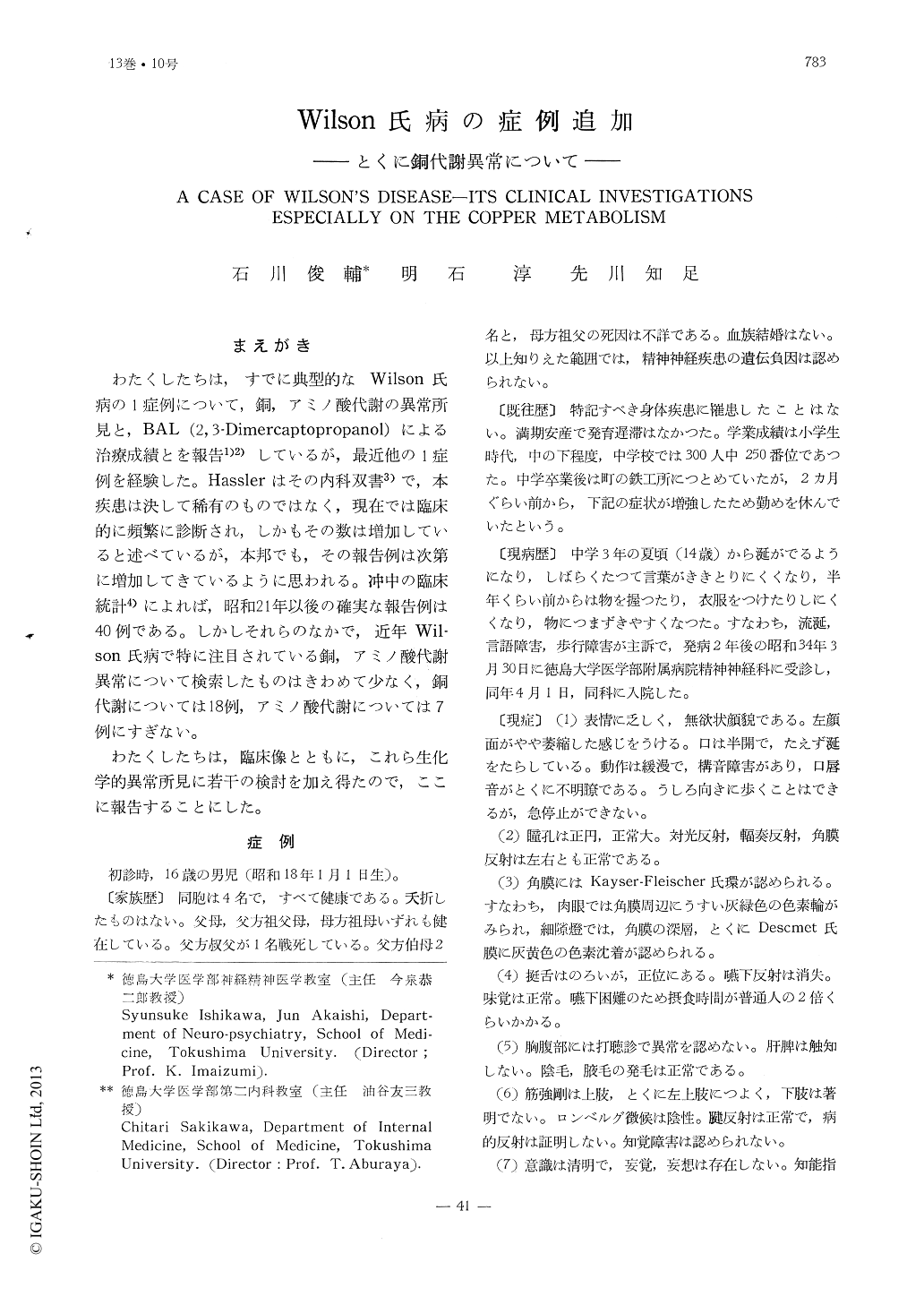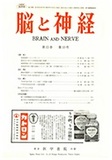Japanese
English
- 有料閲覧
- Abstract 文献概要
- 1ページ目 Look Inside
まえがき
わたくしたちは,すでに典型的なWilson氏病の1症例について,銅,アミノ酸代謝の異常所見と,BAL (2,3-Dimercaptopropanol)による治療成績とを報告1)2)しているが,最近他の1症例を経験した。Hasslerはその内科双書3)で,本疾患は決して稀有のものではなく,現在では臨床的に頻繁に診断され,しかもその数は増加していると述べているが,本邦でも,その報告例は次第に増加してきているように思われる。沖中の臨床統計4)によれば,昭和21年以後の確実な報告例は40例である。しかしそれらのなかで,近年Wil-son氏病で特に注目されている銅,アミノ酸代謝異常について検索したものはきわめて少なく,銅代謝については18例,アミノ酸代謝については7例にすぎない。
わたくしたちは,臨床像とともに,これら生化学的異常所見に若干の検討を加え得たので,ここに報告することにした。
1) A boy, 16, hospitalized on March 1, 1959, because of progressive difficulty in speaking and walking, excessive salivation during past 2 years. No familial manifestation were re-cognized.
2) Clinical examinations revealed the typical Kayser-Fleischer's corneal rings in both eyes and mild hepatic dysfunction. No signs of pyramidal lesion and sensory disturbance were presented. Mental state of this patient was characterized by remarkable irritability, im-pulsiveness and dementia (IQ : 62).
3) Increased urinary excretion of copper (526 γ/day) and amino acids (855 mg/day), low serum copper level (60γ/dl), low serum ceru-loplasmin level (0 determined by Ravin's me-thod) and low B bile copper level (16γ/dl in comparison with 195 γ/dl in normal controls) were evidenced.
4) BAL caused increase in urinary copper output (maximum 2 mg/day), and simultane-ous improvement of neurological symptoms, but did not cause any change of serum copper level.
Another drugs which were administered therpeutically, namely Thioctan (lipoic acid), ATP, Pereston N, and EP hormone had no noticeable effect on copper metabolism, except EP hormone which slightly elevated serum copper level.

Copyright © 1961, Igaku-Shoin Ltd. All rights reserved.


